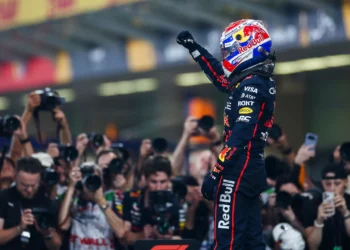Franco Colapinto’s Formula 1 debut was straight out of a Hollywood script—stunning drives, feverish fanfare, and sky-high potential. When Williams unexpectedly promoted him mid-season to replace the struggling Logan Sargeant, the paddock buzzed with excitement. Colapinto grabbed his opportunity, putting in remarkable performances, including a heroic P8 in Baku and a points finish at Circuit of the Americas. Argentina, starved for F1 representation since the days of Carlos Reutemann, embraced Colapinto as their new motorsport messiah.
However, Formula 1 is unforgiving—where you’re only as good as your last race. A string of crashes in Brazil, Las Vegas, and Qatar suddenly flipped the script. Colapinto went from Red Bull rumors and rising star status to driving an uncompetitive car and being labeled as a liability. His impressive early performances were soon overshadowed by mounting repair bills and missed opportunities.
Juan Pablo Montoya’s Insight: Talent Isn’t Enough
Former F1 star Juan Pablo Montoya, known for his blunt honesty, weighed in on Colapinto’s plight. Montoya, a seven-time Grand Prix winner, highlighted the mental challenge drivers face when thrust into F1’s intense spotlight.
“Franco Colapinto has done a really good job. Speed-wise, he’s done a really good job. The problem is, he’s the kind of character…that he just focused on racing and he doesn’t care what people think. That’s very easy to do when you’re not in F1.”
Montoya explained that the early success likely fueled Colapinto’s confidence, but the subsequent crashes would have shaken the team’s faith in him. In F1, where reputations can swing wildly, Montoya emphasized the importance of finding the balance between raw speed and controlled aggression:
“You need to be fast and figure out how to avoid trouble. You can’t start worrying about crashing, or your speed will go away.”
The Ruthless Nature of F1: Hero-to-Zero
Montoya didn’t sugarcoat Colapinto’s fall from grace. While his breakout performances hinted at superstar potential, the mistakes came at the worst possible time.
“The biggest problem in F1 is people just remember what you did in the last race. If you think about Colapinto right now, it’s just crash, crash, crash.”
Montoya suggested that had Colapinto delivered clean results before the Mexico GP, his future might have looked very different. Now, with Carlos Sainz joining Williams and Alex Albon entrenched as the team leader, Colapinto’s chances of securing a 2025 seat have dwindled.
Williams’ Dilemma: Colapinto as a Reserve?
Montoya believes Colapinto’s talent is still worth investing in. He proposed a scenario where Williams keeps Colapinto as a reserve driver, giving the team flexibility if Albon struggles under pressure.
“It seems that Albon under pressure struggles more than others. If Albon starts having a horrible year, then you have Colapinto to put in.”
This strategy allows Williams to safeguard its future without discarding a driver who, despite his inconsistencies, has shown flashes of brilliance.
Lessons Learned: Colapinto’s Path Forward
Colapinto’s whirlwind 2024 serves as a harsh reminder of F1’s brutal reality—talent alone isn’t enough. Young drivers must deliver results under immense pressure while navigating team dynamics and media scrutiny. Montoya’s advice is clear: stay fast, avoid mistakes, and seize every opportunity.
Whether Colapinto becomes a cautionary tale or a future F1 star depends on how he handles this setback. A reserve role might offer him the time and space to regroup, refine his approach, and—crucially—wait for another shot at redemption.
In Formula 1, you’re rarely given second chances—but if Colapinto can rediscover his early-season magic, he might just turn this story around.










